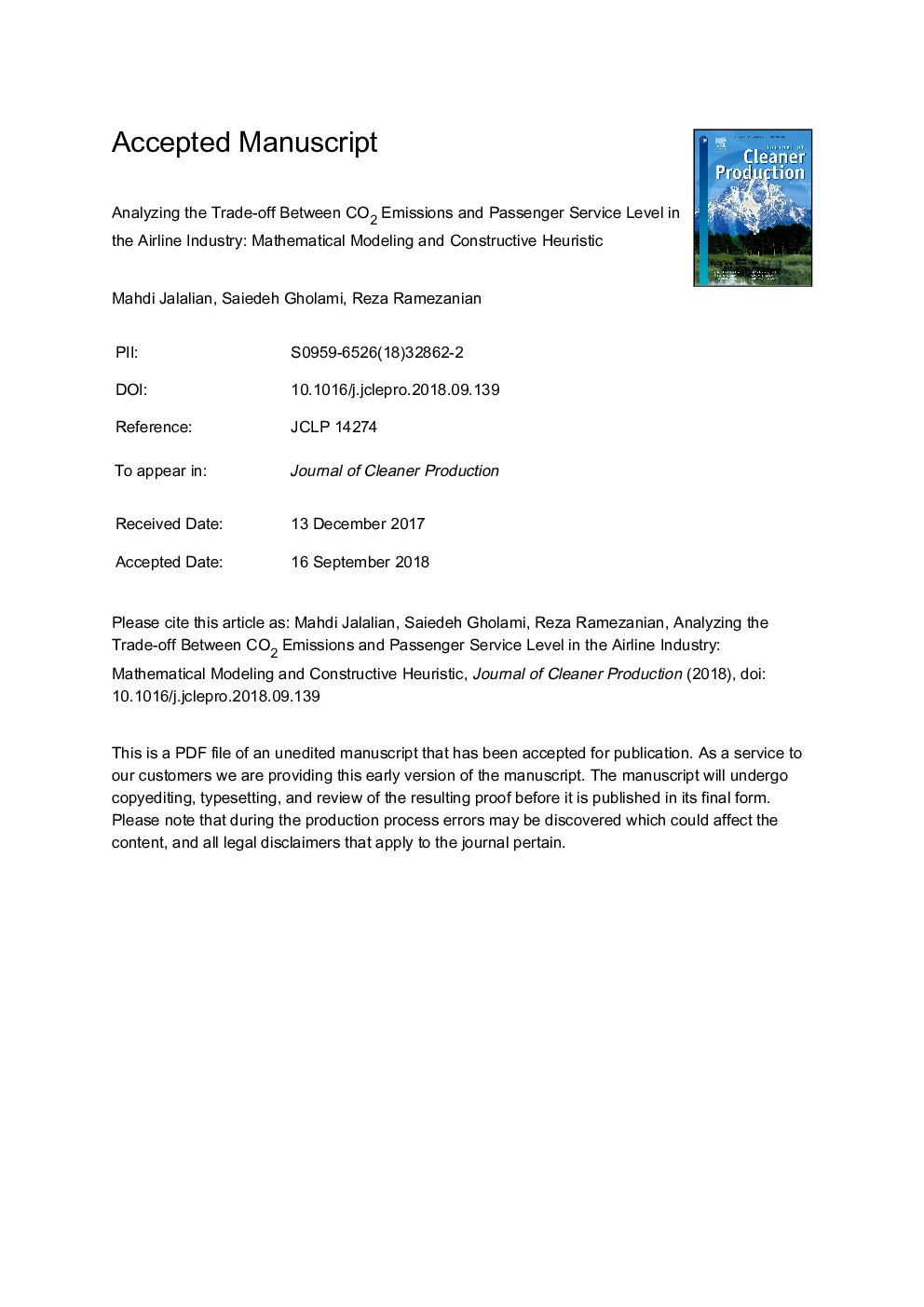| Article ID | Journal | Published Year | Pages | File Type |
|---|---|---|---|---|
| 11019732 | Journal of Cleaner Production | 2019 | 28 Pages |
Abstract
The negative appraisals of the impact of airline industry on climate change have forced the industry to become greener. Over the past several decades, CO2 emissions in the airline industry have increased considerably, thereby adversely affecting the environment. Therefore, airlines are seeking different approaches to reduce the environmental degradation. In this paper, we study cruise speed control to achieve this goal by reducing CO2 emissions while studying passenger service level. We use some indicators to measure the passenger service level in the airline industry. These indicators create a conflict between CO2 emissions and passenger service level. We develop a bi-objective mixed-integer non-linear programming model to integrate flight scheduling, aircraft-path assignment, and gate assignment with the aim of reducing CO2 emissions while increasing passenger service level. Based on a real problem, the model can lead to 11% and 31% improvement in CO2 emissions and passenger service level, respectively. The model is NP-hard. Therefore, we develop a new constructive heuristic method, and we also use the multi-objective simulated annealing algorithm and extend this algorithm to enhance its performance. We also use the design of experiment and Taguchi method to optimize the algorithms parameters. Finally, we evaluate the proposed methods based on information retrieved from major U.S. airlines.
Related Topics
Physical Sciences and Engineering
Energy
Renewable Energy, Sustainability and the Environment
Authors
Mahdi Jalalian, Saiedeh Gholami, Reza Ramezanian,
